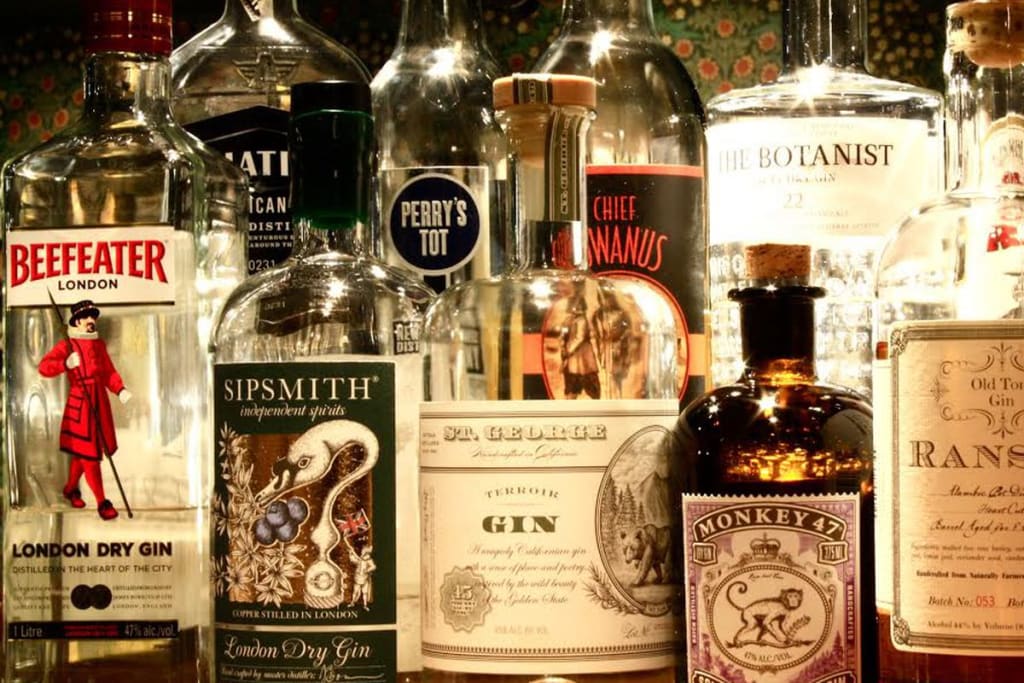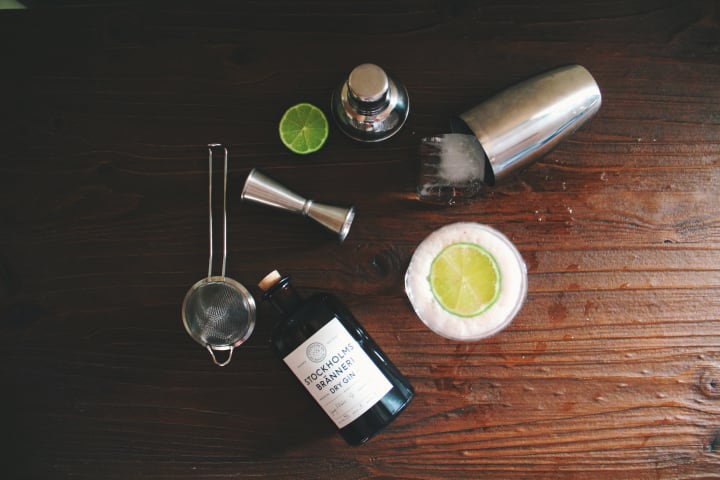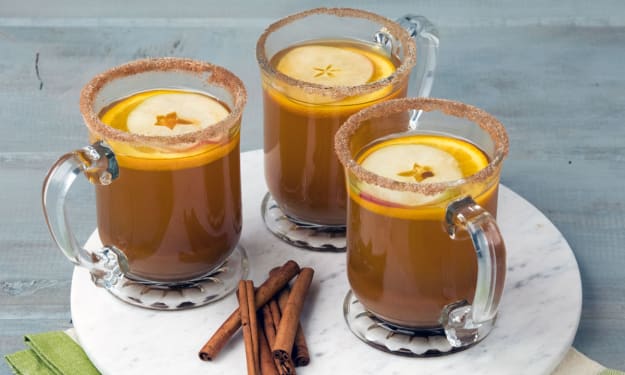The History of Gin in America
Once the most popular spirit in the world, gin still enjoys status as a staple in bars and liquor cabinets. A brief telling of the history of gin in America will tell you all you need to know about how it grew to become the powerhouse spirit it is today.

Gin is one of the most unique and popular distilled spirits in the world. There are few restrictions on what constitutes "gin" as far as ingredients and the distilling process, so the term encompasses a broad array of spirits. The base alcohol can be produced from any number of ingredients, and it can be flavored with any combination of botanicals. It's so easy, in fact, that you can learn how to make gin from scratch. The one central, characteristic ingredient, though, is the juniper berry. Juniper berries form the distinctive aromatic flavor that we associate with gin, and play an important role in the creation and evolution of this fine spirit.
So how did gin gain its current prominence in our liquor cabinets? Most people vaguely know that gin is British in origin and that the spirit is popular throughout the United States, but what exactly happened in between? Is American gin different from the London dry style? Is gin still popular or is it on its way out? Explore these questions and more, I have found all anyone could ever need about the history of gin in America.
Origins

Photo by John Fornander on Unsplash
Gin as we know it today first emerged in England in the early 17th century. The history of gin dates back even further, however, to a similar Dutch spirit known as genever or jenever (Dutch for "juniper"), which dates back to at least the early 16th century in Holland. This Dutch spirit was originally produced by distilling malt wine to 50 percent ABV and adding botanical herbs to mask the harsh flavor. Juniper berries were a popular choice because, in addition to their unique flavor, they were believed to offer great medicinal benefits. This spirit, in its original form, is still enjoyed in many parts of Europe, particularly in Scandinavian countries.
Jenever made its way to England when William of Orange invaded Great Britain in 1688. From there, the spirit evolved into what we recognize today as London dry gin. In fact, the word "gin" is simply a shortened form of "geneva," which was the Anglicization of "jenever." The primary distinction between Jenever and gin is the base spirit. Rather than malt wine, the English used what they had on hand and readily available. For most, this meant using cheap grains like barley. This poor quality barley was distilled into a neutral grain spirit, and flavored with juniper and other botanicals in order to mask the flavor.
Gin was an immediate hit in England, and thousands of gin shops opened up in London alone. This explosion in popularity, often referred to as the "Gin Craze," was mostly thanks to the affordability of the drink. Gin's true staying power, however, was thanks to its purported medicinal properties. The predecessors for many modern gin cocktails were invented around this time, typically intended for medicinal use. Gin mixed with lime juice was utilized to combat scurvy, and provided the basis for the modern Gimlet cocktail. Gin was also commonly mixed with the anti-malarial agent quinine, which you may recognize as the key ingredient in tonic water, thus forming the basis for the modern Gin & Tonic.
Journey to America

Photo by Annie Spratt on Unsplash
It wasn't long before gin made its way across the Atlantic to the colonies. Even after the United States won their independence from Great Britain, the spirit continued to grow in popularity. By the 19th century, gin's popularity in England had plateaued, but the history of gin in America was just beginning to flourish.
A major factor in this increased popularity was the development of new and unique styles of gin. A softer, sweetened version of gin known as "Old Tom Gin" was developed in England in the 18th century and enjoyed popularity in America until the early 20th century. The advent of column-still distillation technology in the mid-19th century allowed for the production of a purer base spirit, leading to what is now known as "London dry gin" or simply "dry gin."
Gin enjoyed great popularity in the United States throughout the 19th century. In fact, it wasn't until 1967 that vodka overtook gin as America's favorite spirit. Gin's popularity continued to decline throughout the century, with vodka replacing gin even in staple cocktails like the Martini. Today, gin holds just a small share of all alcohol sales in the United States, ranking behind vodka, whiskey, and rum. However, a recent resurgence in craft cocktails and craft gin distilleries means that there's hope for gin to make its long overdue comeback.
Use in Cocktails

Photo by Soul van Schaik on Unsplash
The history of gin in America is largely tied to cocktails because of some of the many important cocktails that helped solidify gin's status as one of the most popular spirits in the western world. A few recipes for these classic drinks that have defined the prominence of the spirit is a sure-fired way to understanding the importance behind the history of gin.
Among the most prominent of these is the cocktail that helped put gin on the map in America is the Martini. The recipe is simple, and the only ingredients you need are one of the best gins of 2018, some dry vermouth, and a lemon peel or olive for garnish. Add your gin and vermouth (6:1 ratio) to a mixing glass filled with ice and stir until chilled. Strain into a martini glass and garnish with either an olive or a thin slice of lemon peel.
Another classic and underrated gin cocktail is the Gimlet. This cocktail could just as easily be called a "Gin Sour," as it's in the same family as the Whiskey Sour and the Daiquiri (which is just a "Rum Sour"). In a cocktail shaker, add 2oz of gin, 1oz of lime juice, and 0.5oz of simple syrup over ice. Shake until well-chilled and strain into a cocktail glass. Garnish with a lime wedge or a thin slice of lime peel.
Lastly, let's make a simple Gin & Tonic. This highball cocktail is the ideal go-to summer drink, and is a great choice any time you feel like a "long drink" as opposed to a strong, alcohol-heavy cocktail like the Martini. Simply add a shot of gin to a glass filled with ice and top with tonic water. Garnish with a lime wedge and enjoy!
These recipes are easy enough for beginners behind the bar; but once you develop a true palette for this king among spirits, the most delicious gin cocktails everyone should know are readily available for your drinking pleasure.
About the Creator
Joseph D. N. Kendrick
Writer of words. Haver of cats. joeykendrick.com






Comments
There are no comments for this story
Be the first to respond and start the conversation.